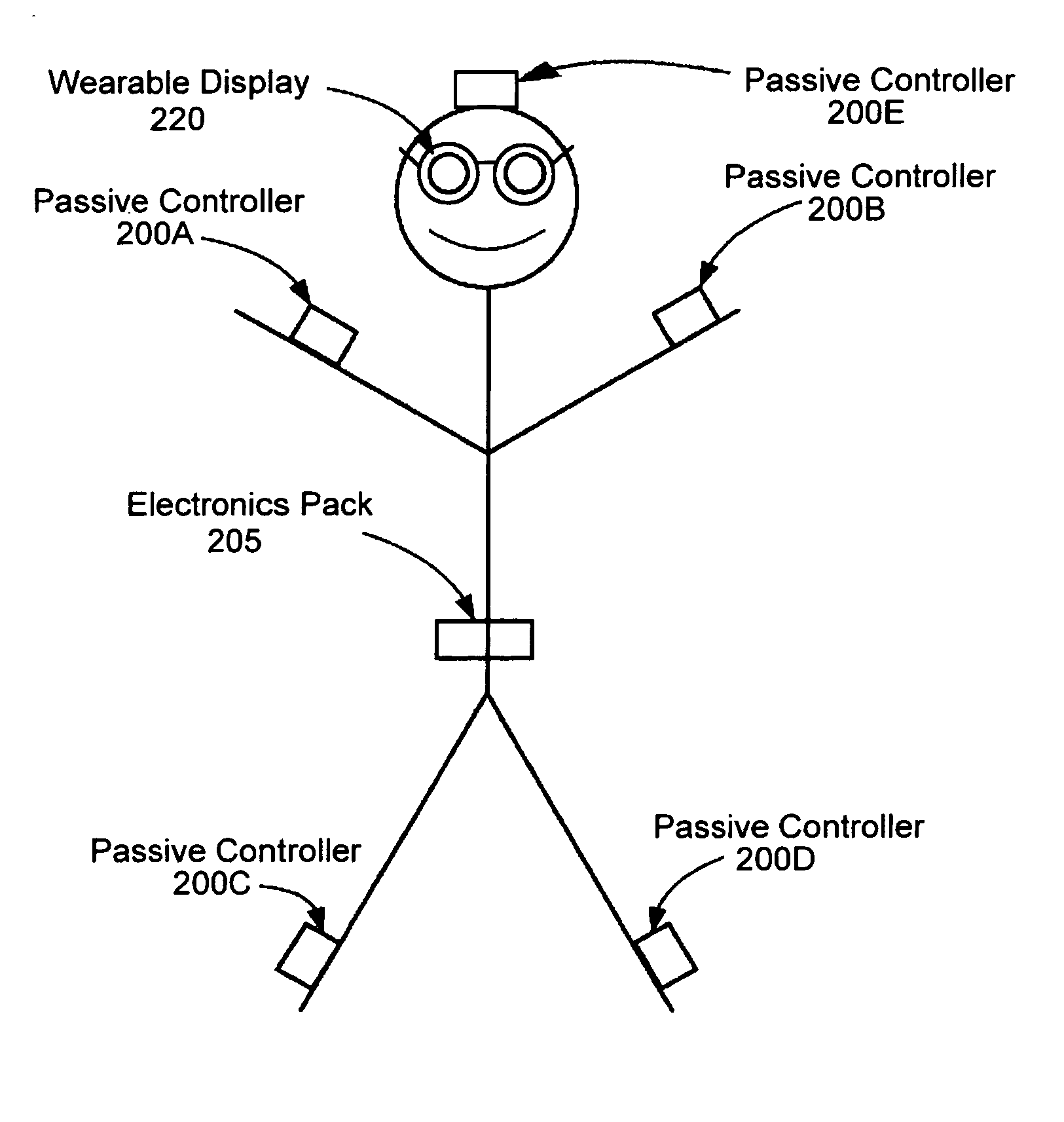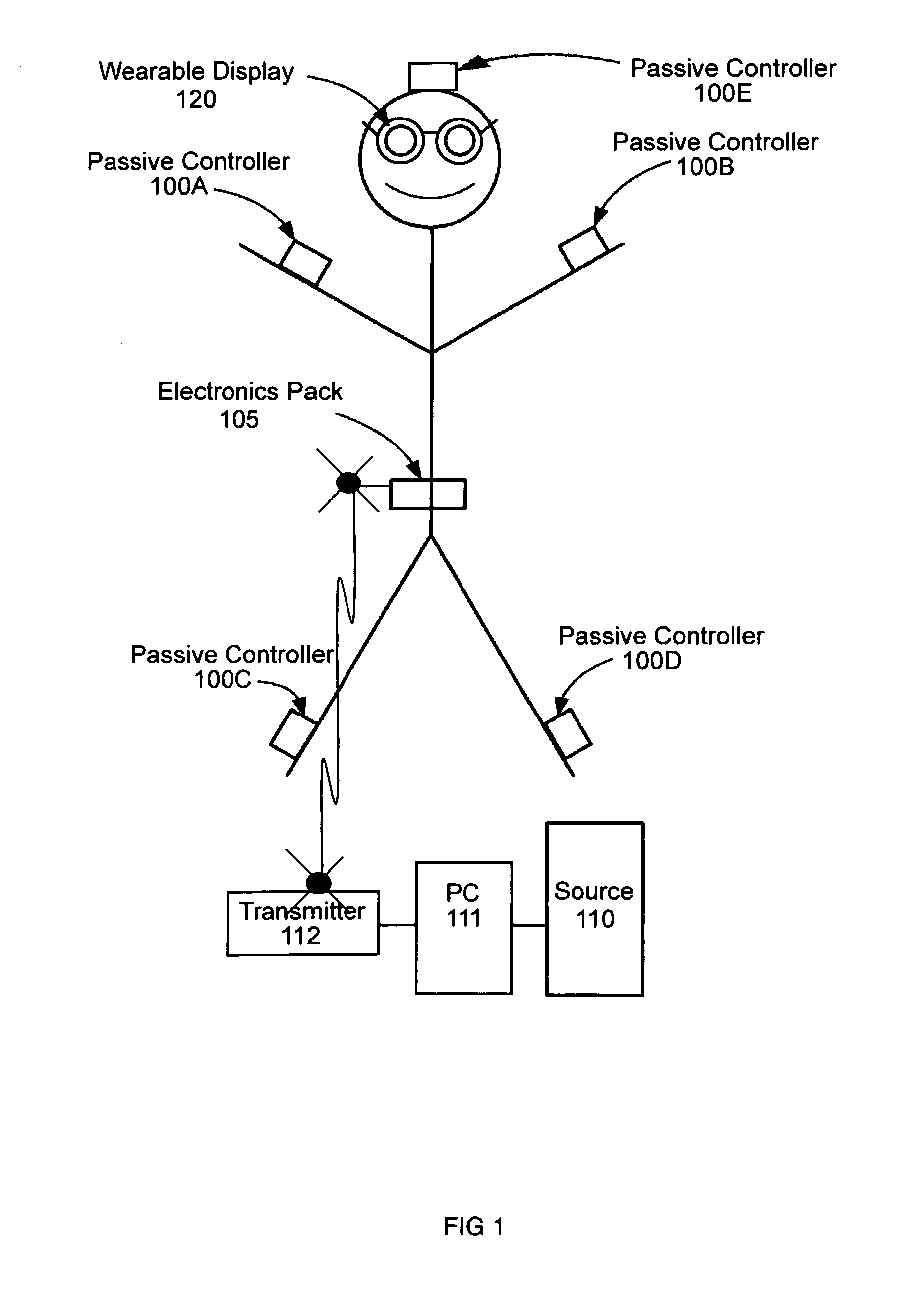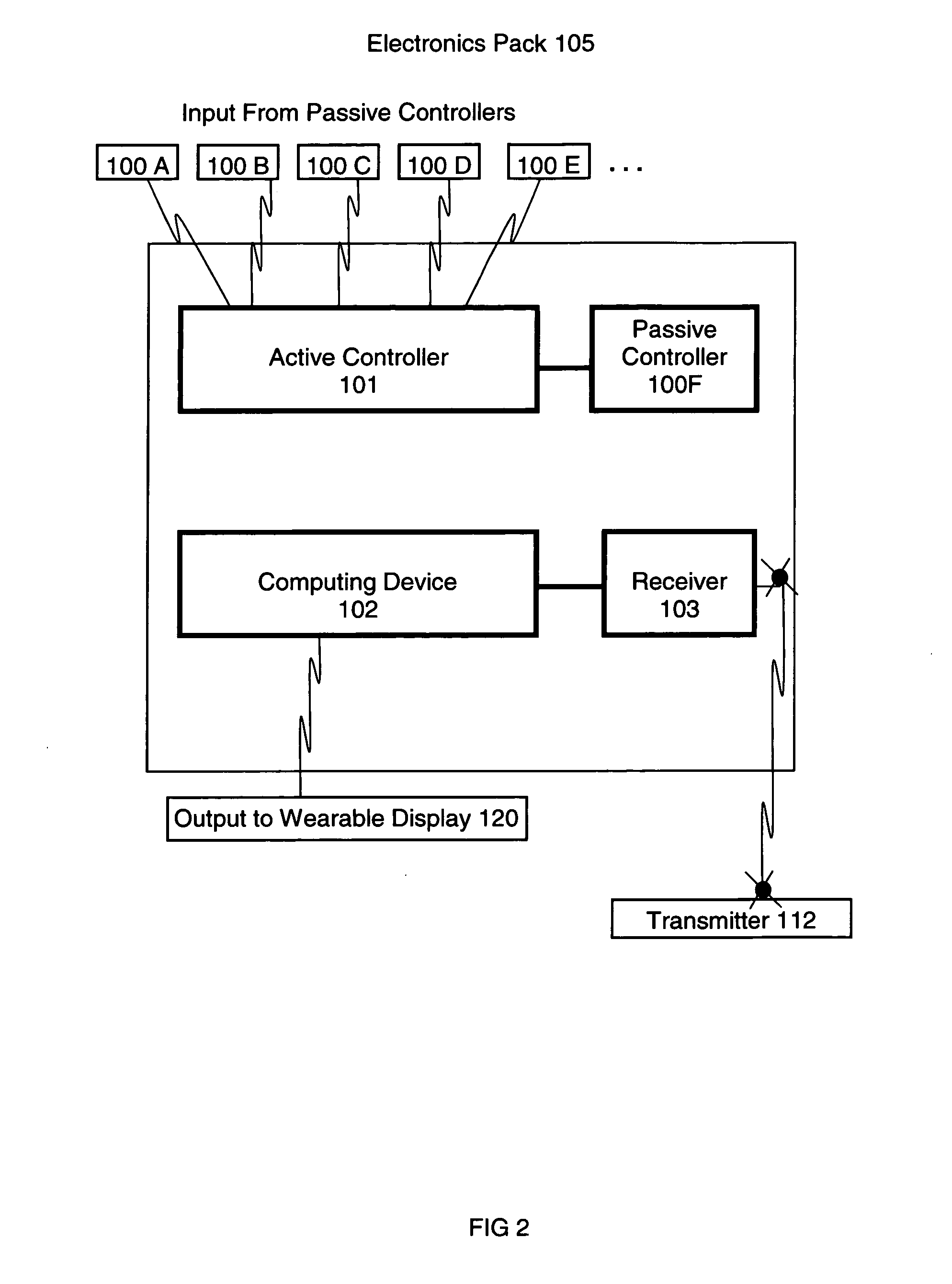Augmented reality for testing and training of human performance
a technology of augmented reality and human performance, applied in the field of augmented reality for testing and training of human performance, can solve the problems of ineffective movement training, inefficient biomechanics, and inability to effectively train movement, and achieve the effect of facilitating communication with the sensors employed
- Summary
- Abstract
- Description
- Claims
- Application Information
AI Technical Summary
Benefits of technology
Problems solved by technology
Method used
Image
Examples
Embodiment Construction
[0062]The present invention is capable of identifying kinematic and / or performance factors that may expose the athlete to an increased risk of injury or that negatively impact the athlete's physical performance capabilities. Real-time visual feedback can alert the athlete to potentially dangerous, or at least potentially inefficient, movement patterns. Alternatively, the present invention can be used as an entertaining physical activity for members of the general populous, including children, seniors, patients and fitness buffs.
[0063]In summary, the present invention has the following capabilities: 1. the assessment of certain factors pertinent to the athlete's kinematics and physical performance during movement, 2. provision for real-time visual feedback regardless of the direction in which that the athlete is gazing (viewpoint) or the direction in which the athlete is moving, 3. the option of either pre-programmed testing and / or training protocols and workouts or user-determined a...
PUM
 Login to View More
Login to View More Abstract
Description
Claims
Application Information
 Login to View More
Login to View More - R&D
- Intellectual Property
- Life Sciences
- Materials
- Tech Scout
- Unparalleled Data Quality
- Higher Quality Content
- 60% Fewer Hallucinations
Browse by: Latest US Patents, China's latest patents, Technical Efficacy Thesaurus, Application Domain, Technology Topic, Popular Technical Reports.
© 2025 PatSnap. All rights reserved.Legal|Privacy policy|Modern Slavery Act Transparency Statement|Sitemap|About US| Contact US: help@patsnap.com



